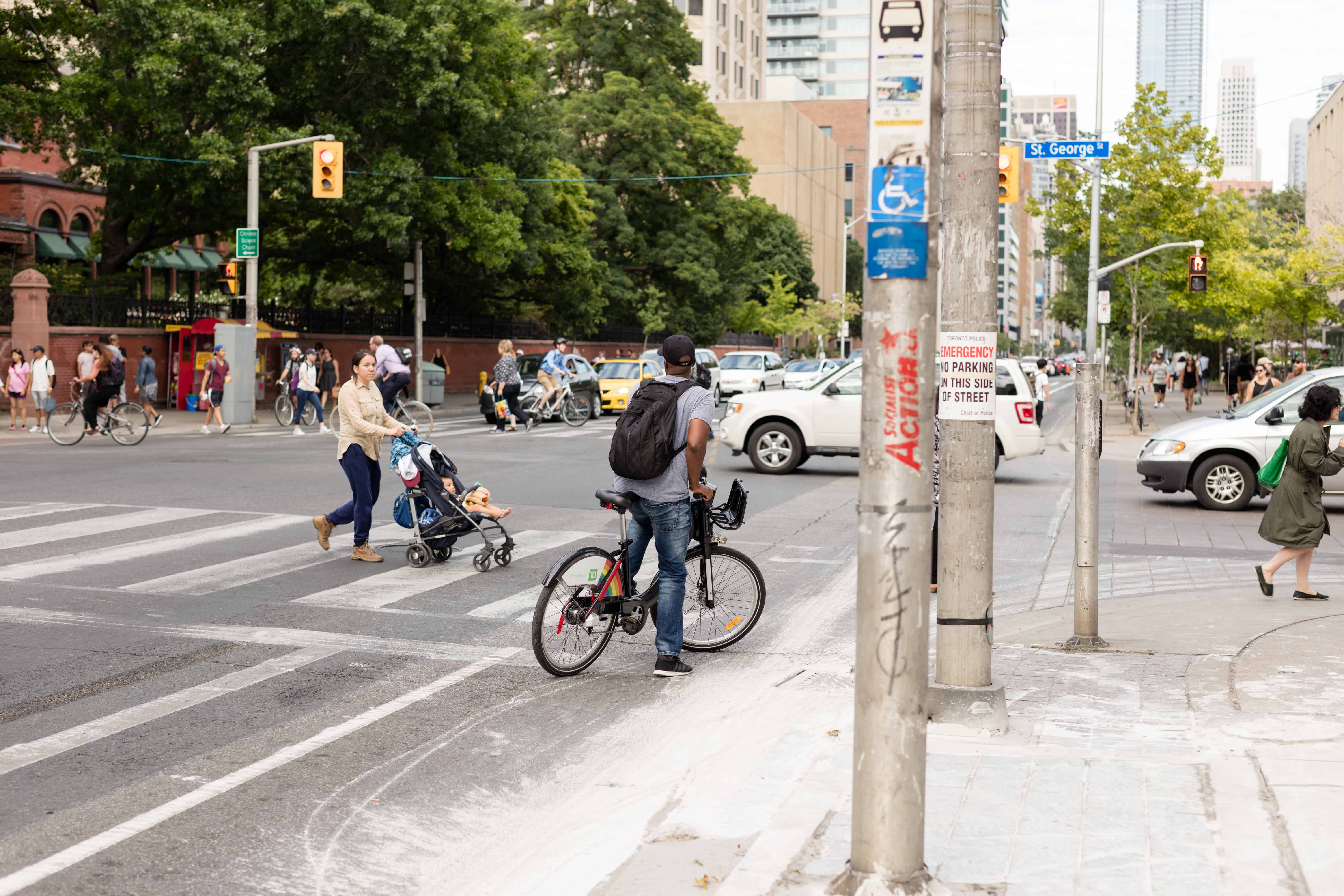Toronto’s transportation services released a report on October 3 summarizing the results of a year-long pilot project researching the effect of bike lanes on Bloor Street. The results have revealed that the bike lanes have had a positive impact on the community and the report advocates for their permanent implementation.
The project was established in May 2016 in response to rising concerns about cyclist safety on Bloor Street. According to the final evaluation, the project sought to improve safety for cyclists while encouraging more Torontonians to travel by bike. Since the addition of bike lanes in August 2016, there has been a 49 per cent increase in cycling on Bloor Street with 25 per cent representing new riders.
The comfort and safety of cyclists, motorists, and pedestrians were all found to have increased since the implementation of bike lanes. Preliminary data shows that there is a 44 per cent decrease in the overall number of conflicts on the road as well as an increase in road users’ feelings of safety.
Mayor John Tory said in a May 4, 2016 Toronto City Council meeting that he wanted an “extremely rigorous, objective measurement” of the effects that bike lane implementation would have on the community.
The bike lanes that run along Bloor Street West between Shaw Street and Avenue Road are used by many U of T students to commute to campus.
Emily Doucet, a PhD candidate at U of T’s Department of Art, said she is “definitely in support of the bike lanes.” Doucet uses the Bloor bike lanes daily and said that the presence of bike lanes makes her feel safer during her commute.
“I rode down Bloor before and you [were] just that much more in the way of car doors and stuff. It’s still not perfect because people move doors the other way now, but it definitely makes a difference, and I see a lot more different kinds of people biking now too.”
Matti Siemiatycki, an Associate Professor at the U of T Department of Geography and Planning, thinks that the permanent implementation of bike lanes on Bloor would be “a critical step for the city of Toronto,” and will “contribute to making cycling a viable option across the city.”
Siemiatycki, whose research interests include transportation policy and planning, believes that this project has significance beyond simply improving cycling culture.
“Because of that evidence-based process, we can now look at this project and accept its merits,” said Siemiatycki. “I think this points to an approach that should be used more broadly for infrastructure.”
The project has garnered significant support from members of the community, including Tory, who recently tweeted his support for the permanent implementation of the bike lanes.
The report is to be presented to the Public Works and Infrastructure Committee on October 18 and then voted on by City Council on November 7.


